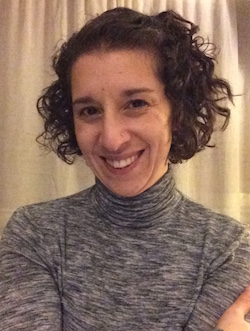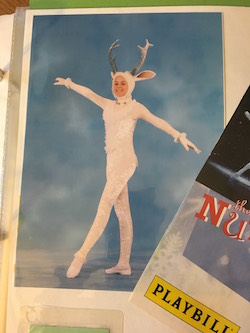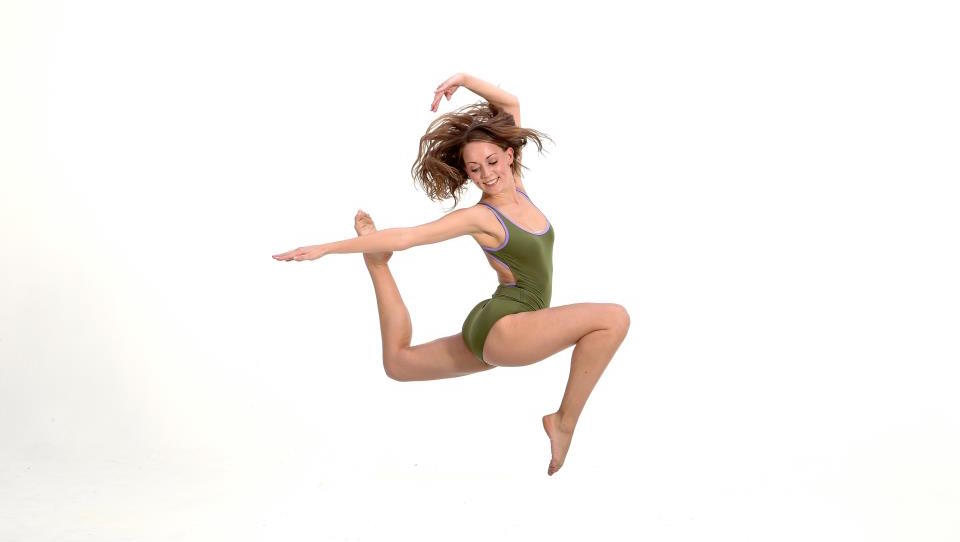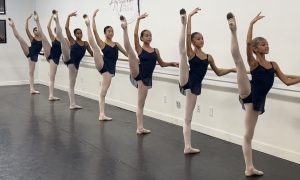That “gawky” feeling – when limbs feel too long for one’s body, as if not really their own. In the pre-teen and teen years – an already turbulent time of raging hormones, quickly shifting social dynamics and independent identity formation – growth spurts can bring this feeling of physical unfamiliarity. Dancers rely upon an acute familiarity with how to use their limbs, however.
“Our proprioceptive system tells us where our body is in space,” explains Tricia Gomez, global director of Rhythm Works Integrative Dance. “Our kinesthetic system tells us how our body is moving in space. Both systems rely on input from nerves in our muscles, joints, ligaments and tendons. One way these systems work together is to provide feedback to our brains so we know how much force is required to accomplish a movement.”

Tricia Gomez.
Gomez describes how these feedback systems happen without us having to think about it “because the movement is likely something we’ve practiced and performed many times. In instances such as sudden growth spurts, however, our proprioception and kinesthetic systems get a little out of whack.”
With bone growth and subsequent weight gain, she describes how the body needs to make new “motor plans to accomplish tasks that used to be second nature, because there is now more force needed to move heavier, longer bones.” Turning, leaping, traveling steps, staying in choreographed formations and just about everything else dancers do can become completely new challenges.
Melissa Buffer-Trenouth, MSPT and dance medicine specialist, further describes what’s happening on an anatomical level in these cases. She explains how the long bones of the arms and legs grow faster than the muscles that move them, as well as the torso, creating that “gawky” look and feel of one who’s just had a growth spurt. Turning and balance can be particular challenges.

Melissa Buffer-Trenouth.
“Injuries can be more common in these cases, so it’s important that teachers and dancers are careful,” Buffer-Trenouth adds. A pediatrician should be on deck, to ensure proper treatment should an injury occur, she advises. Rest is then key, to allow for healing. She agrees that somatic work such as Feldenkrais and the Alexander Technique, and movement forms such as yoga and Pilates, can help deepen anatomical awareness.
This awareness can help reduce the risk of injury, as well as help mitigate (as well as reduce the duration of) that “gawky” growth spurt feel. Buffer-Trenouth also recommends using TheraBand work, for both awareness and healing, as well as the strengthening that can help reduce the risk of injury. TheraBand work might also be part of pre-pointe regimens, so it can serve a double purpose. All in all, growth spurt struggles most often will happen, she states, and are difficult periods to get through as smoothly as possible.
Sam Govoni, a freelance dancer in Boston, MA, and Europe, shares her experience of these challenges. She describes how she had a big growth spurt at 11 years of age, going from around the same height as her peers to up to 5’8″.
There were difficulties with technique, particularly turning. “I had a hard time focusing on both my upper body and lower at the same time and felt I had no control over where my limbs went,” she explains. “My body felt as if it was in pieces and not whole, which was quite awkward.”

Sam Govoni as a Reindeer in Boston Ballet’s ‘The Nutcracker’. Photo courtesy of Govoni.
More significant, arguably, were socioemotional effects. Despite being otherwise quite technically capable, she was told that she was only eligible to audition for the role of Reindeer in Boston Ballet’s The Nutcracker (when her peers could audition to be Party Girls). She watched the Party Girls spend lots of time on stage and dress up in pretty costumes, but more than that doubts about her future as a dancer emerged.
“I started always being placed in the back, and even though teachers made it a point to mention it was due to height, I still felt as though I was not good enough,” Govoni recalls. “Thoughts of if I would ever be hired in a ballet company arose because I had overheard people mention how hard it is to find a partner for taller girls.”
Comments such as “try on the largest costume” also brought out a natural tendency of young women toward being self-conscious about their body; there was a lack of the caveat “because your height”, opening up ambiguity if it might be about her weight. To this day, comments about “trying on the biggest costume” bring up a bit of that pre-teen insecurity, and she has to remind herself that it’s because of her height, rather than her weight, she describes.
Govoni recommends that teachers be careful about such comments, being specific and clear so that there’s no ambiguity. She also recounts how taking other dance forms, such as jazz, at another studio helped open her eyes to more ways her body can move and express, in valid and beautiful ways, no matter her height. It helped her deepen her artistry and mature as a dancer.

Sam Govoni. Photo by Peter Kaskons Photography.
Buffer-Trenouth also recommends this experiencing of different styles, so that if one may be more challenging when one hits a growth spurt, or the growth puts one outside of the ideal body type in a certain form, there are other areas to explore and in which to excel. She also recommends pre-teen and teen students having a clearly, frequently communicating support team – including dance teachers, medical professionals, mental health professionals and parents – to help guide young dancers through challenging times such as growth spurts.
Like Govoni, Buffer-Trenouth discusses care of language to avoid stigmatizing dancers encountering sudden growth. She suggests offering modifications, and making it clear to other dancers that it might very well happen to them soon enough (as growth spurts can occur at any point, and at different ages for different people).
It seems to all come down to using both head and heart, reason and compassion, to guide young dancers through the times in which they’re quickly growing into the artists and people that they will be.
By Kathryn Boland of Dance Informa.













